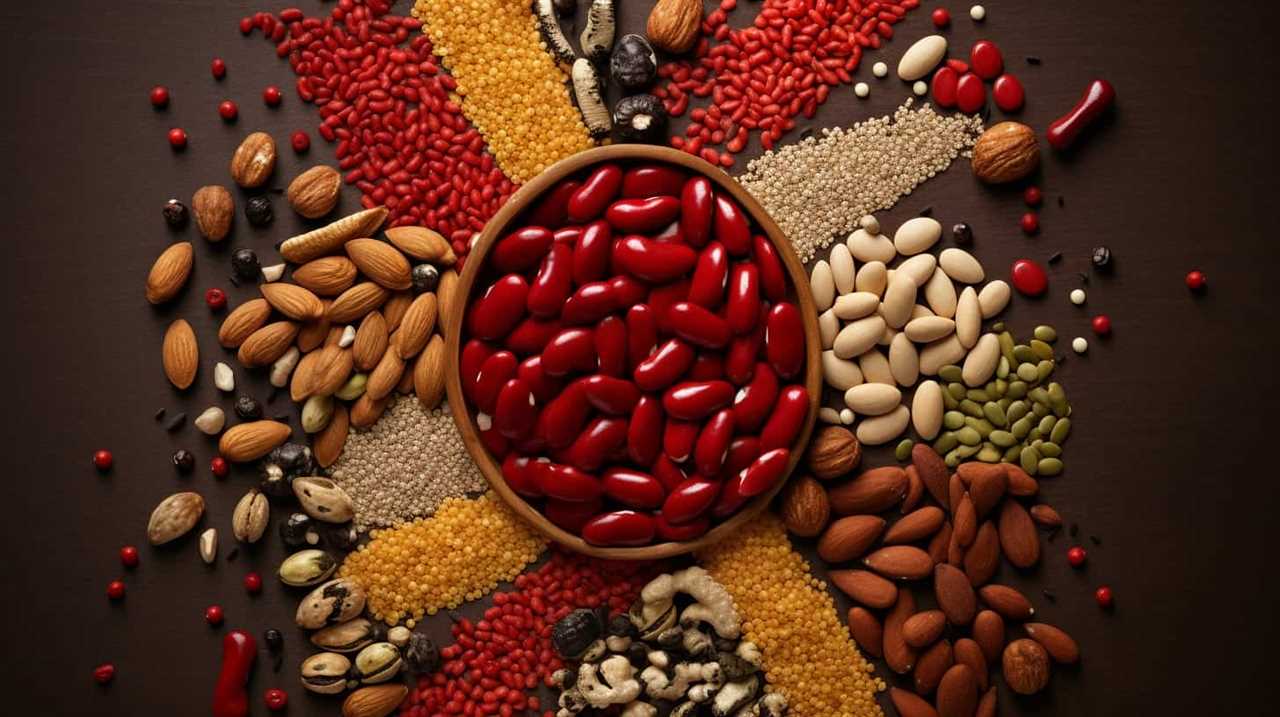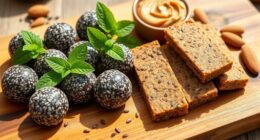Have you ever considered the historical significance of consuming a diet predominantly based on seeds, as the age-old saying goes, “You are what you eat”?
From ancient civilizations to modern times, the consumption of seeds has played a crucial role in shaping cultures and societies.
In this article, we will explore the fascinating journey of chia seeds, their significance in Mesoamerican cultures, and their recent rediscovery.
Join us as we uncover the profound impact that a simple seed can have on our history and well-being.

Key Takeaways
- Chia seeds have a long history of use as a nutritional powerhouse, providing omega-3 fatty acids, fiber, protein, and antioxidants.
- Chia seeds were not only used for their nutritional benefits but also for their culinary versatility, being used as a thickening agent, egg substitute, and texture enhancer in various dishes.
- Chia seeds held deep cultural and religious significance in Aztec society, being used in religious rituals and ceremonies and being one of the staple crops cultivated by the Aztecs.
- Chia seeds have experienced a resurgence in popularity in recent years due to their high nutritional value and health benefits, and they are now widely recognized as a valuable addition to any diet.
Ancient Civilizations and Chia Seeds
As we delve into the historical influence of a seed-based diet, it’s important to explore the significant role that chia seeds played in the diets of ancient civilizations.
Chia seeds, known for their exceptional nutritional benefits, were an integral part of the ancient civilizations’ diets. These tiny seeds were a powerhouse of nutrients, providing a rich source of omega-3 fatty acids, fiber, protein, and antioxidants.
The people of ancient civilizations recognized the health benefits of chia seeds and incorporated them into their daily meals. Apart from their nutritional value, chia seeds also had various culinary uses. They were used as a thickening agent in soups and stews, added to baked goods for extra texture, and even used as a replacement for eggs in vegan recipes.
The versatility and health benefits of chia seeds made them a staple in ancient civilization’s diets, proving their importance in maintaining a healthy and balanced lifestyle.
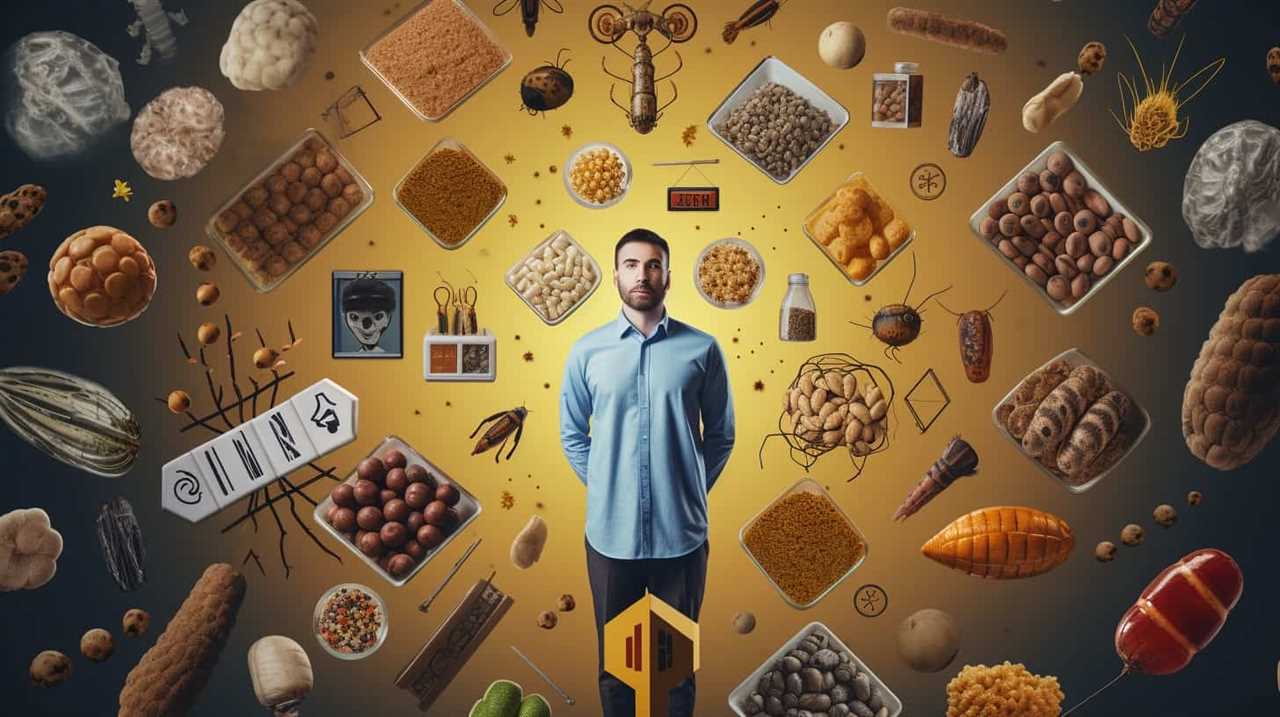
Chia Seeds in Mesoamerican Cultures
Chia seeds held a significant role in the diets of Mesoamerican cultures, providing us with valuable insights into their ancient traditions and culinary practices. These tiny seeds weren’t only a staple food but also had immense cultural significance.
Here are three key aspects of chia seeds in Mesoamerican cultures:
- Nutritional Benefits:
- Chia seeds were highly nutritious, packed with essential nutrients like omega-3 fatty acids, fiber, and protein.
- They provided sustained energy, making them an ideal food source for warriors and laborers.
- Chia seeds were believed to have medicinal properties, aiding digestion and promoting overall well-being.
- Cultural Significance:
- Chia seeds were often offered as part of religious ceremonies and rituals.
- They were used in the creation of intricate artwork and pottery, showcasing their importance in Mesoamerican culture.
- Chia seeds were also used to make traditional beverages like chia fresca, which were enjoyed during celebrations and gatherings.
- Culinary Practices:
- Chia seeds were commonly used as a thickening agent in various dishes, such as sauces and puddings.
- They were also mixed with water or fruit juice to create a gel-like substance, which was consumed as a refreshing beverage.
- Chia seeds were incorporated into bread, tortillas, and other baked goods, adding a nutty flavor and nutritional boost.
The cultural significance and nutritional benefits of chia seeds in Mesoamerican cultures highlight the deep connection between food, tradition, and health. Understanding the role of chia seeds in ancient civilizations allows us to appreciate the rich heritage and wisdom of these cultures.
Chia Seeds in Aztec Society
The Aztec society’s utilization of chia seeds reveals their understanding of the nutritional value and cultural significance of this seed-based food. Chia seeds played a crucial role in Aztec agricultural practices, as they were one of the staple crops cultivated by the Aztecs. The Aztecs recognized the nutritional benefits of chia seeds, which are rich in omega-3 fatty acids, fiber, and protein. They incorporated chia seeds into their diet as a way to supplement their nutrition and provide sustained energy.

Furthermore, chia seeds held deep religious significance for the Aztecs and were used in various religious rituals and ceremonies. They were believed to have mystical properties and were often offered as sacrifices to the gods. This sacred connection between chia seeds and spirituality further highlights the cultural importance of this seed in Aztec society.
Transitioning into the subsequent section about ‘chia seeds as a staple food’, it becomes clear that the Aztecs recognized the immense value of chia seeds not only in their religious practices but also as a fundamental part of their everyday diet.
Chia Seeds as a Staple Food
Transitioning into our discussion on the subtopic of chia seeds as a staple food, it’s evident that the Aztecs recognized the immense value of incorporating this nutrient-rich seed into their everyday diet. Chia seeds are packed with nutritional benefits, making them an ideal addition to any meal. Here are some of the culinary uses and benefits of chia seeds:
- Chia seeds can be used as a thickening agent in soups, sauces, and dressings, adding a subtle nutty flavor to the dish.
- They can be ground into a powder and used as a substitute for eggs in baking recipes, making them a great option for vegans or those with egg allergies.
- Chia seeds can be sprinkled over salads, yogurt, or oatmeal to add a crunchy texture and boost the nutritional value of the meal.
With their versatility and health benefits, chia seeds have gained popularity in modern times. Now, let’s explore the modern rediscovery of chia seeds and how they continue to impact our diets today.
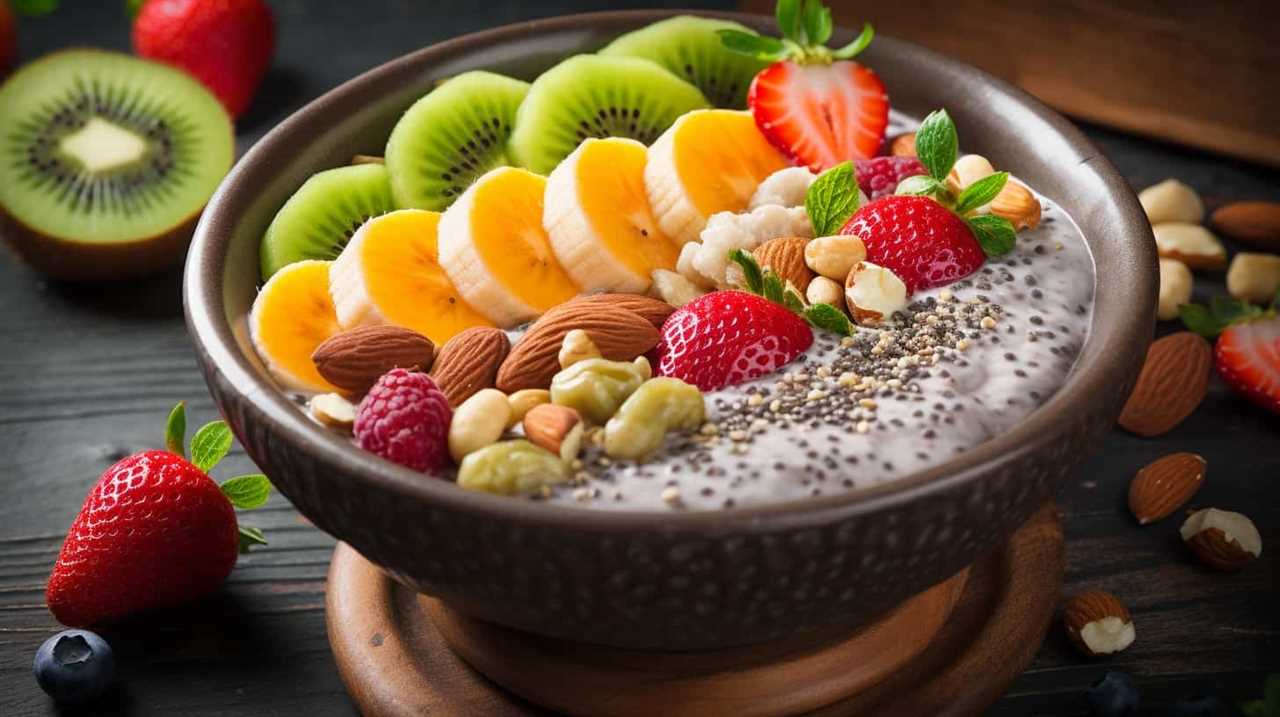
Modern Rediscovery of Chia Seeds
As we delve into the modern rediscovery of chia seeds, it’s evident that their incorporation into contemporary diets has become increasingly frequent. People are becoming more aware of the nutritional benefits that chia seeds offer, and this has led to their popularity in recent years. Chia seeds are rich in omega-3 fatty acids, fiber, protein, and antioxidants, making them a valuable addition to any diet.
Their versatility in culinary uses is also a major factor in their resurgence. Chia seeds can be added to smoothies, sprinkled on top of salads or yogurt, used as a binding agent in baking, or even made into a gel-like substance for use in puddings and jams. Their ability to absorb liquid and form a gel-like consistency makes them an excellent alternative for eggs in vegan baking.
The modern rediscovery of chia seeds is rooted in their incredible nutritional benefits and their ability to enhance a variety of dishes, making them a valuable addition to our diets.
Frequently Asked Questions
How Do Chia Seeds Compare to Other Types of Seeds in Terms of Nutritional Value?
Chia seeds have higher nutritional value compared to flax seeds. They are rich in fiber, protein, and omega-3 fatty acids. Chia seeds are known for their weight loss benefits due to their ability to absorb water and promote satiety.
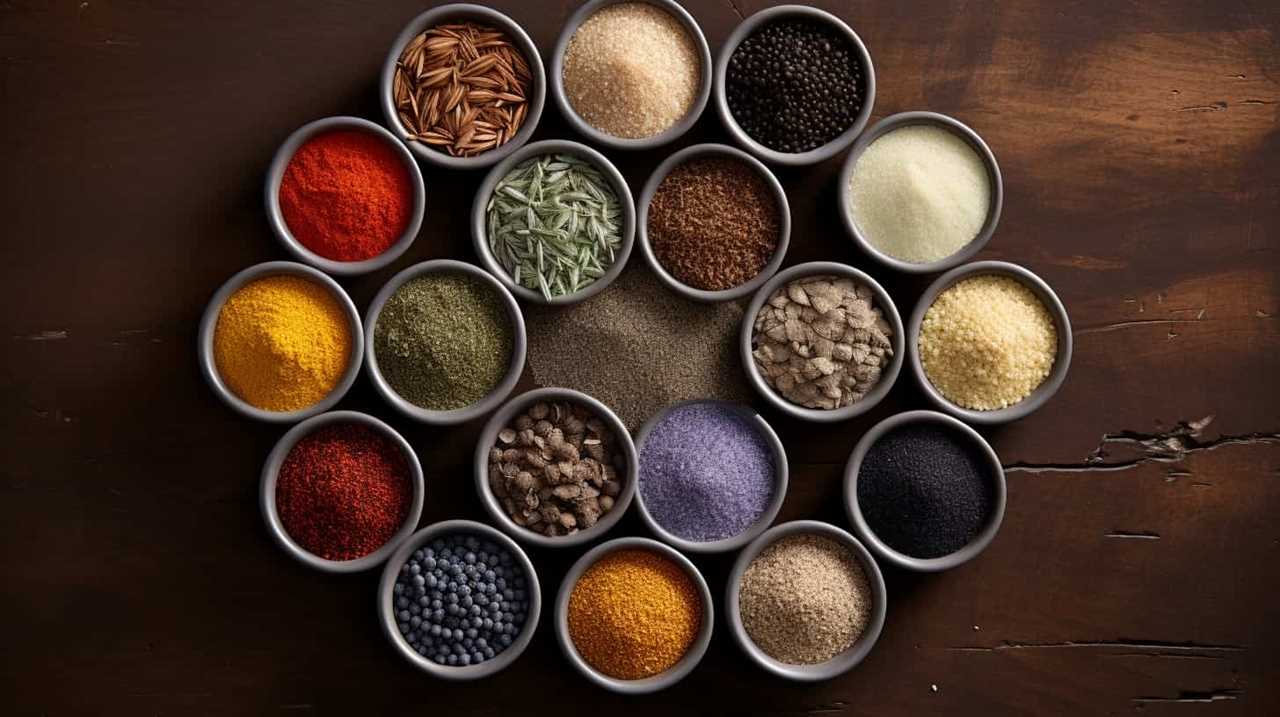
Were There Any Negative Health Effects Associated With Consuming Chia Seeds in Ancient Civilizations?
There weren’t any negative health effects associated with consuming chia seeds in ancient civilizations. However, it’s important to consider the long term impacts of consuming chia seeds historically.
How Did Chia Seeds Become Popular in Modern Diets?
Chia seeds became popular in modern diets due to their nutritional benefits, versatility, and incorporation into trendy foods like smoothie bowls and chia puddings. They have gained recognition as a superfood and continue to be embraced by health-conscious individuals.
Are There Any Traditional Recipes or Dishes That Incorporate Chia Seeds?
Oh, the wonders of traditional chia seed recipes! We’ve discovered some hidden gems that not only delight our taste buds but also offer incredible health benefits. Let us enlighten you with our findings.
Can Chia Seeds Be Used as a Substitute for Other Ingredients in Cooking or Baking?
Chia seeds can be used as a gluten-free alternative in baking, and as an egg substitute in vegan recipes. They add texture, moisture, and nutrients to dishes, making them a versatile ingredient for those with dietary restrictions.
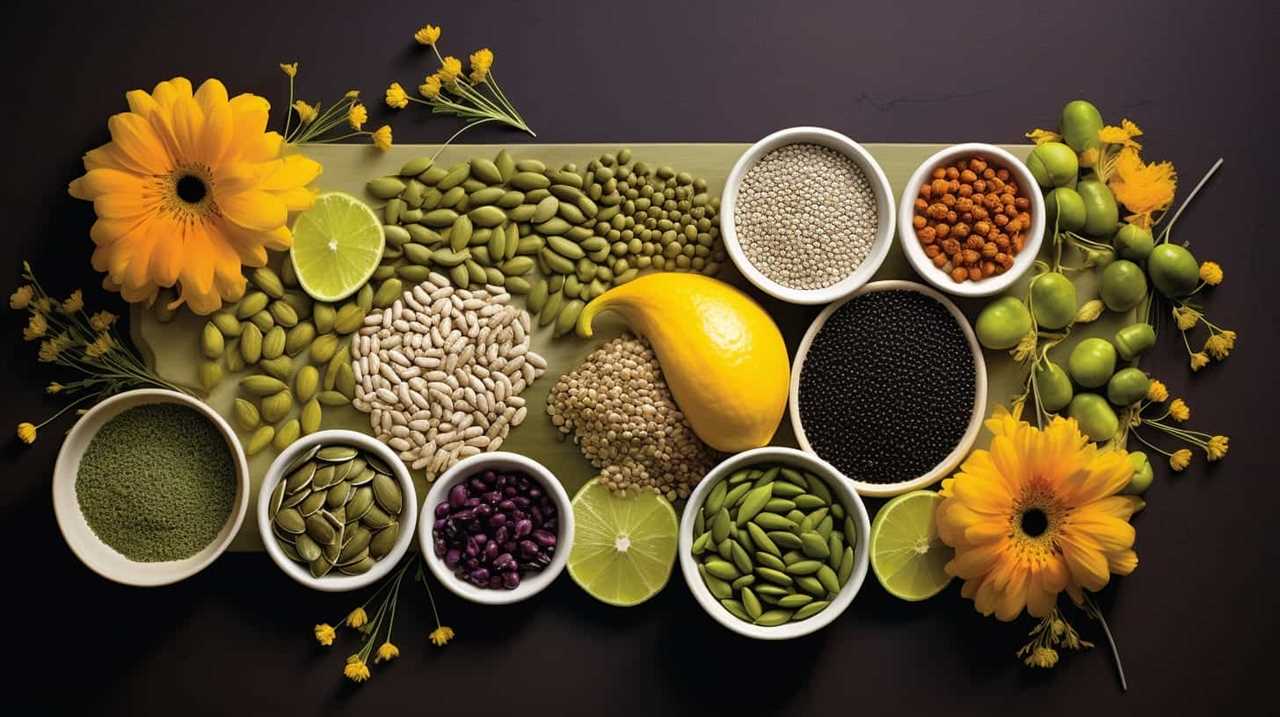
Conclusion
In conclusion, the historical influence of a seed-based diet, particularly chia seeds, is profound.
From ancient civilizations to modern times, chia seeds have played a pivotal role in sustaining societies and providing essential nutrients.
The rediscovery of chia seeds in recent years has allowed us to reconnect with our ancestral wisdom and embrace a healthier, more sustainable way of living.
Let the image of these tiny seeds, bursting with vitality and potential, inspire us to nourish our bodies and cultivate a better future.


